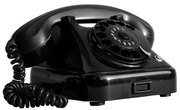Helen Keller was one of the most admired public figures of the 20th century. Despite losing her abilities to hear and see as a child, she overcame enormous odds by not only learning to communicate but also by teaching others as an author and speaker. Many people consider her to have been vital to the advancement of the American Sign Language (ASL) program, although, in reality, Keller did not favor the ASL program and was criticized by many of its most ardent supporters.
Finger Spelling
Keller's teacher, Anne Sullivan, introduced the young Helen to language by using finger spelling, a letter-by-letter form of sign language. Sullivan spelled words directly into Helen's hand, despite the fact that Helen could not understand them. As Sullivan spelled words that represented tangible objects, such as water, she also tried to introduce Helen to the objects the words represented. Over time, Helen made the connection and learned to communicate effectively with this technique.
Controversy
Despite her having learned to communicate by signing, Keller was an advocate of oralism, much to the chagrin of those who championed sign language. Oralism is a method used to teach children with little hearing ability how to articulate words learned from lip reading and by touch. While oralism techniques have fallen into disuse and have been criticized by members of the deaf community, Keller labeled oralism "one of the divinest miracles of the nineteenth century." Partly as a result of receiving her endorsement, oralism was taught to many deaf children early in the 20th century, and proponents of oralism often sought to remove sign language instruction from schools.
Impracticality
Helen Keller lamented that sign language was impractical, and perhaps futile, for deaf-blind people to use. She was pleased that the advent of sign language allowed many deaf people to interact with others, but she was certain that more effective methods of deaf instruction waited to be discovered. Advocating oralism in her book The Story of My Life, she stressed that articulation was of utmost importance to a deaf-blind person. She used sign language rarely, and felt uncomfortable doing so. However, she eagerly used sign language if it was the only means by which another deaf person could communicate with her.
Multiple Methods of Communication
Helen Keller was an innovator at communicating. Even before she learned to communicate with others using crude finger spelling, she used tactile signs to communicate with members of her own family after she lost her sight and hearing as a child. Later, as an accomplished adult, she used every means at her disposal to communicate with others, including Braille, attempting to articulate through speech, touching the mouths of people as they addressed her and using sign language. She prized communication itself more than any single method of communication.
Worldwide Reknown
Helen Keller is a poster child for the popularization of sign language, despite the fact that she rarely used it to express herself. After many years of work as a student and teacher, she made courageous forays into public speaking and recorded her experiences in eloquent writing. The nonprofit organization she founded in 1915, when she was 35 years old, Helen Keller International, is dedicated to fighting and treating preventable blindness around the world, especially in underdeveloped nations. Around the world, the first public figure most people associate with blindness and social programs related to blindness is Helen Keller, even though she died more than four decades ago.
Related Articles
References
Writer Bio
James Withers has authored in excess of 200 articles on eHow, expanding on journalistic experience acquired as a commentator for the newspaper of the University of Texas at Arlington. Withers began publishing professionally in 2007. Withers holds a Bachelor of Arts in English from the University of Texas at Arlington.











